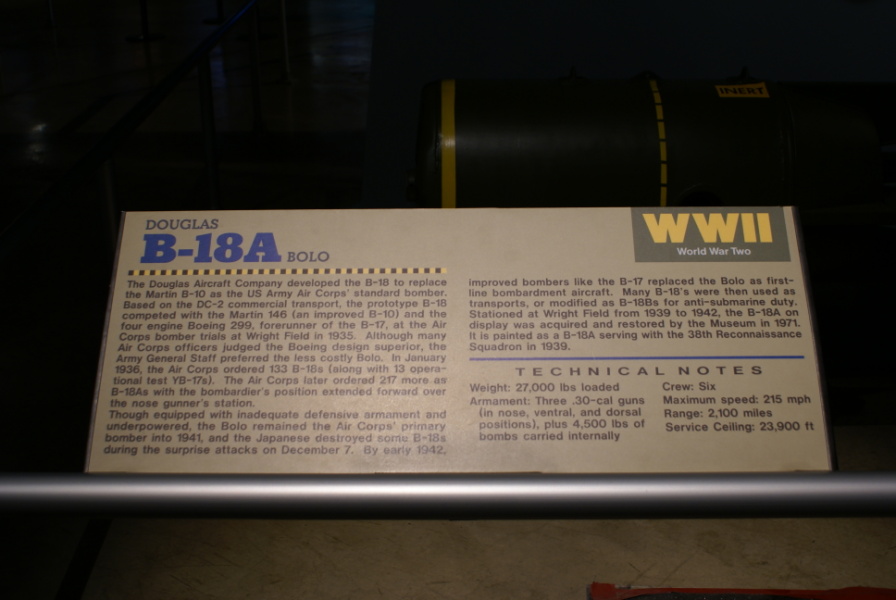| Prev |
heroicrelics.org Air Force Museum Site Index B-18 Bolo Gallery |
Next |
dsc63466.jpg
The sign accompanying the B-18. It reads
Boeing B-18A "Bolo"
The Douglas Aircraft Company developed the b-18 to replace the Martin B-10 as the US Army Air Corps' standard bomber. Based on the DC-2 commercial transport, the prototype B-18 competed with the Martin 146 (an improved B-10) and the four engine Boeing 299, the forerunner of the B-17, at the Air Corps bomber trials at wright field in 1935. Although many Air Corps officers judged the Boeing design superior, the Army General Staff preferred the less costly Bolo. In January 1936, the Air Corps ordered 133 B-18s (along with 13 operational test YB-17s). The Air Corps later ordered 217 more as B-18As with the bombardier's position extended forward over the nose gunner's station.
Though equipped with inadequate defensive armament and underpowered, the Bolo remained the Air Corps' primary bomber into 1941, and the Japanese destroyed some B-18s during the surprise attack on December 7. By early 1942, improved bombers like the B-17 replaced the Bolo as first-line bombardment aircraft. Many B-18s were then used as transports, or modified as B-17Bs for anti-submarine duty. Stationed at Wright Field from 1939 to 1942, the B-18a on display was acquired and restored by the Museum in 1971. It is painted as a B-18A serving with the 38th Reconnaissance Squadron in 1939.
Technical Notes Weight: 27,000 lbs loaded Armament: Three .30 cal guns (in nose, ventral, and dorsal positions, plus 4,500 lbs of bombs carried internally Crew: Six Maximum speed: 215 mph Range: 2,100 miles Service ceiling: 23,900 ft.

| Time picture taken | Sun May 17 09:12:48 2009 |
| Location picture taken | Air Power Gallery Air Force Museum Dayton, OH |
| Prev | B-18 Bolo Gallery | Next |